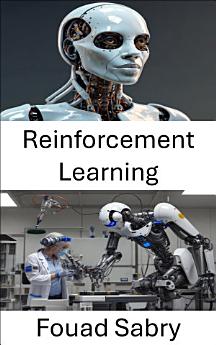Reinforcement Learning: Mastering Intelligent Decision Making for Autonomous Machines
About this ebook
Chapters Brief Overview:
1: Reinforcement learning: Introduces the core concept of reinforcement learning, emphasizing its role in autonomous systems.
2: Markov decision process: Explains the mathematical framework for decisionmaking under uncertainty, a key foundation for reinforcement learning.
3: Temporal difference learning: Explores methods for learning from experience without needing a model of the environment.
4: Bellman equation: Discusses the critical recursive relationship that underlies many reinforcement learning algorithms.
5: Qlearning: Focuses on an offpolicy reinforcement learning algorithm that learns optimal actions without a model of the environment.
6: Multiarmed bandit: Covers a simpler reinforcement learning problem that models decisionmaking in uncertain environments.
7: Partially observable Markov decision process: Expands on traditional Markov decision processes by incorporating hidden states.
8: Gittins index: Introduces a strategy for balancing exploration and exploitation in multiarmed bandit problems.
9: State–action–reward–state–action: Delves into the temporal patterns in reinforcement learning that inform decisionmaking strategies.
10: Protovalue function: Explores methods for approximating value functions, aiding in the efficiency of learning.
11: Automatic basis function construction: Focuses on automatic methods for constructing features to improve learning efficiency.
12: Meanfield game theory: Discusses a framework for modeling interactions in largescale multiagent systems.
13: Multiagent pathfinding: Introduces algorithms for coordinating multiple agents to reach their destinations efficiently.
14: Modelfree (reinforcement learning): Discusses methods that do not rely on a model of the environment for learning.
15: Deep reinforcement learning: Combines deep learning and reinforcement learning to handle complex, highdimensional environments.
16: Multiagent reinforcement learning: Focuses on strategies for learning in environments with multiple interacting agents.
17: Selfplay: Explores the concept of agents learning through competition with themselves, a critical component of advanced learning strategies.
18: Proximal policy optimization: Introduces an algorithm for optimizing policies in reinforcement learning with improved stability and performance.
19: Explorationexploitation dilemma: Discusses the fundamental challenge of balancing exploration of new strategies with exploiting known ones.
20: Reinforcement learning from human feedback: Examines methods for improving reinforcement learning using human input.
21: Imitation learning: Focuses on techniques where agents learn by mimicking the actions of human experts.
Reinforcement Learning is not just a technical guide, but an essential resource for understanding how autonomous systems can adapt and make decisions in a wide range of environments. Whether you're a robotics professional, a student, or a hobbyist, this book offers insights that will equip you with the knowledge needed to master reinforcement learning and apply it to realworld robotic systems.











